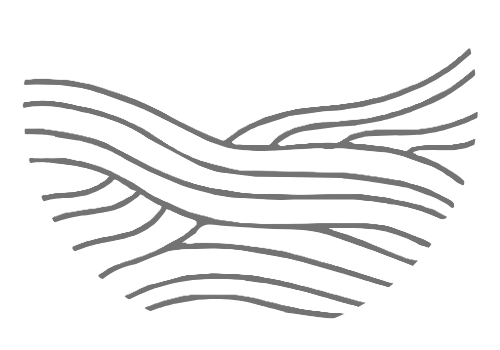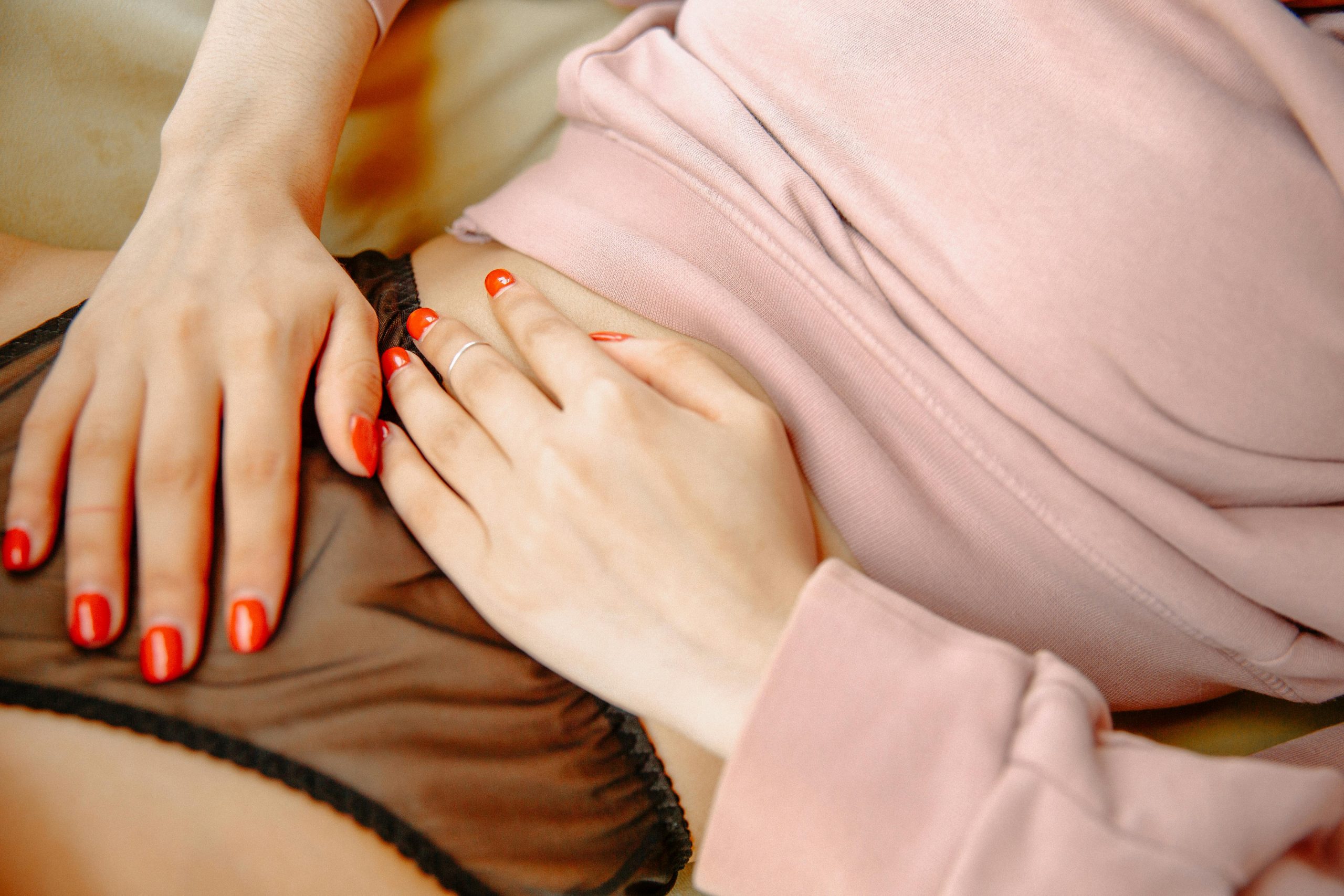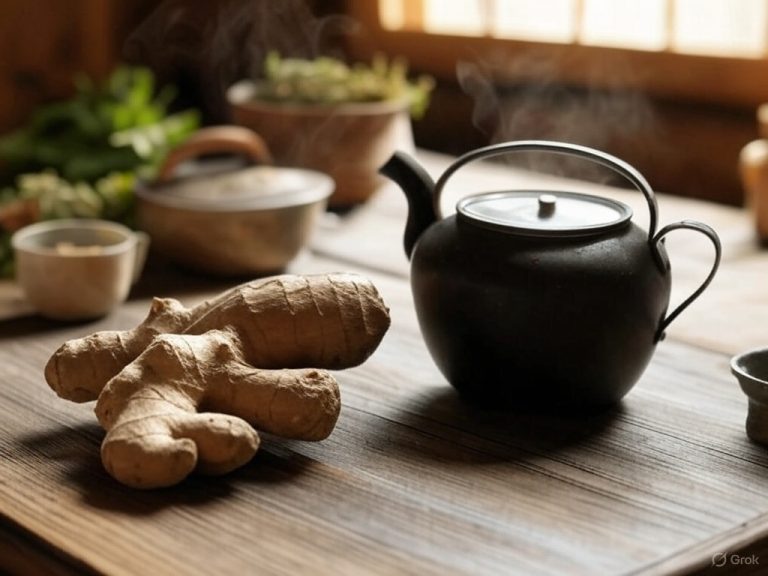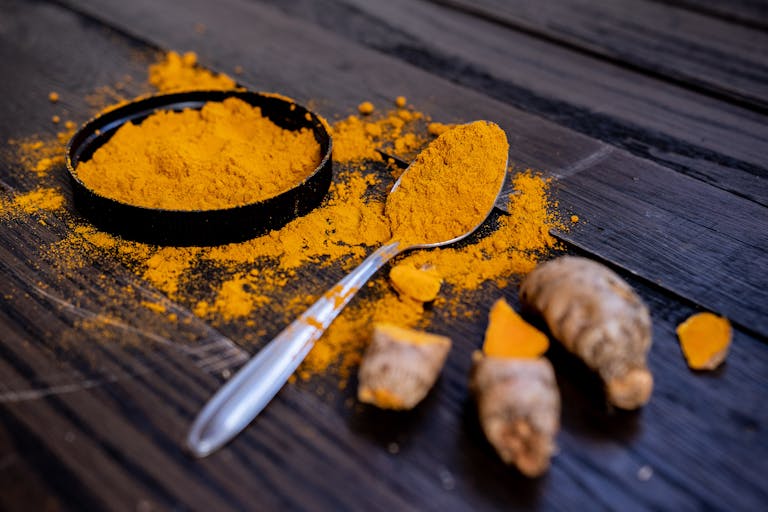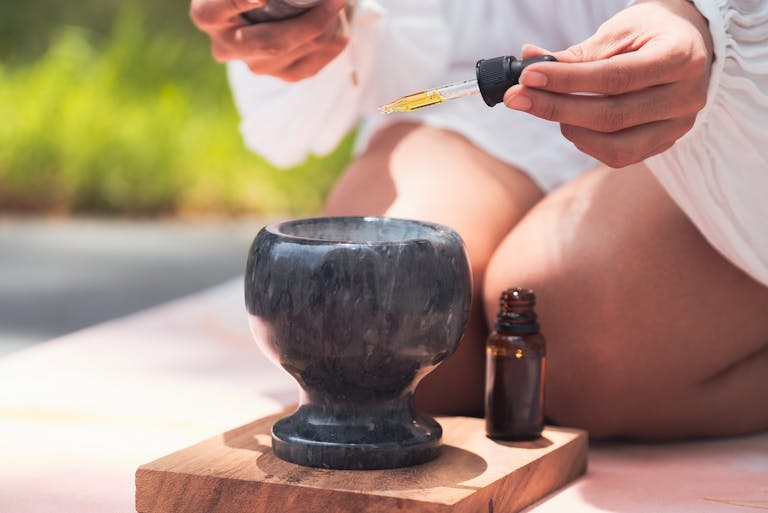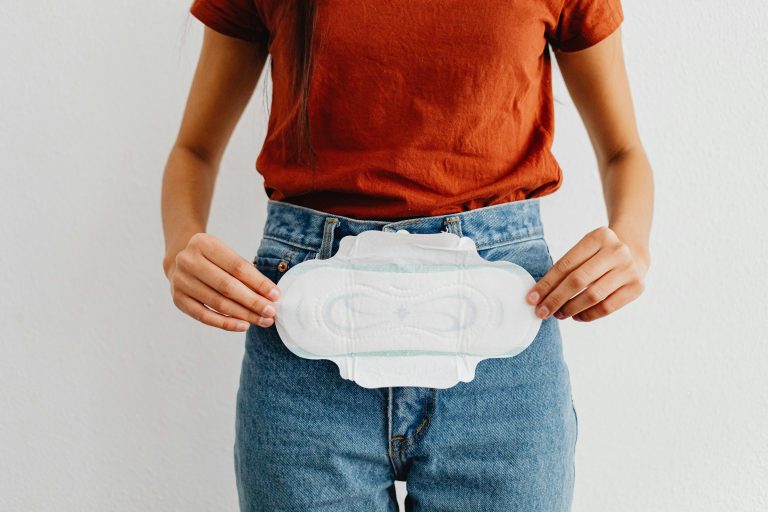I’ll never forget sitting in pain in my 9th-grade geography class, while trying to focus on the exam in front of me. The cramps were so intense that I could barely think straight, but I was too embarrassed to say anything. Back then, I had no idea that what I was experiencing wasn’t just “normal period stuff” I had to endure – there were actually natural ways to help balance my hormones and reduce that monthly agony!
Did you know that approximately 80% of women experience period pain at some point, with 5-10% having pain so severe it disrupts their daily life? I wish someone had shared that statistic with me as a teenager. I might have felt less alone in my struggles and more empowered to seek solutions.
Today, I’m sharing everything I’ve learned about natural approaches to hormone balance and period pain relief. Because nobody should have to suffer through class (or anything else) while their uterus feels like it’s waging war against them!
Understanding the Hormone-Period Pain Connection
Let’s get real about what’s actually happening in our bodies during menstruation. I remember my biology teacher brushing over the topic so quickly that all I understood was “bleeding happens monthly if you don’t get pregnant.” But there’s so much more to it!
Your monthly cycle is a delicate hormonal dance. Estrogen rises during the first half, preparing your uterine lining to thicken. Then progesterone takes the lead after ovulation, maintaining that lining until it drops, triggering your period. When these hormones get out of balance – too much estrogen relative to progesterone, for instance – inflammation increases, and with it, pain.
I spent years thinking severe pain was just my lot in life. I’d pop painkillers like candy during my period, wondering why some girls seemed completely unbothered by theirs. What I didn’t realize was that excessive pain is often a sign of hormone imbalance, not just bad luck.
The prostaglandins released during menstruation cause uterine contractions, which create that cramping sensation. But when your hormones are imbalanced, you might produce too many inflammatory prostaglandins, leading to more intense pain. It’s not “just how periods are” – it’s a sign your body needs support.
Conditions like endometriosis, PCOS, and fibroids can worsen period pain significantly due to their effects on hormone balance. While I’m not suggesting that natural remedies replace proper medical care for these conditions, addressing underlying hormone imbalances can help reduce symptoms regardless of the cause.
Nutrition Strategies for Hormone Balance
If someone had told teenage me that what I ate could affect my period pain, I would’ve been skeptical. But I would have given it a shot. Since then science confirms it’s one of the most powerful tools we have!
Anti-inflammatory foods became my best friends once I learned about their impact (read more here). Fatty fish, walnuts, flaxseeds, and leafy greens can reduce inflammation throughout your body, including in your uterus. I now make a point to include these in almost every meal, not just during my period.
Specific nutrients play crucial roles in hormone production and regulation. Magnesium, found in dark chocolate (yes, really!), pumpkin seeds, and spinach, acts as a natural muscle relaxant and can reduce cramping. Vitamin B6 in chickpeas, tuna, and chicken helps support healthy progesterone levels. Zinc in oysters, beef, and pumpkin seeds aids in proper hormone metabolism.
What you don’t eat matters just as much as what you do. I used to demolish a pint of ice cream during my period, thinking I deserved the comfort. But sugar, processed foods, and excessive dairy can worsen inflammation and hormone imbalances. I’m not saying never indulge – but being mindful of these foods, especially in the week before your period, can make a significant difference.
One approach that revolutionized my relationship with period pain was cycle syncing – adjusting my diet based on the phase of my menstrual cycle.
During menstruation, I focus on iron-rich foods to replenish what’s lost through bleeding. Beyond the typical lentils and spinach, I incorporate grass-fed beef, pumpkin seeds, quinoa, dried apricots, and dark chocolate. I’ve found that pairing these with vitamin C-rich foods like bell peppers, strawberries, and citrus fruits enhances iron absorption.
In the follicular phase that follows, I emphasize fresh, light foods that support healthy estrogen production. This includes cruciferous vegetables like broccoli, cauliflower, and brussels sprouts, which contain compounds that help metabolize estrogen properly. I also add antioxidant-rich berries, sprouts, fermented foods like kimchi and sauerkraut, and fresh herbs that support liver function and hormone clearance.
Around ovulation, I prioritize fiber-rich foods to maintain hormone balance. Chia seeds, flaxseeds, avocados, artichokes, raspberries, green peas, and a variety of beans help remove excess estrogen from the body. I also include healthy fats from olive oil, avocados, and nuts to support hormone production and reduce inflammation.
And in the premenstrual phase, I’ve found focusing on foods rich in tryptophan helps support serotonin production naturally. Eggs, turkey, salmon, nuts (especially walnuts), and seeds contain tryptophan without relying on high-carb options. I also incorporate magnesium-rich foods like leafy greens, pumpkin seeds, and even a square of dark chocolate (85% or higher), which helps regulate neurotransmitters and reduce cravings.
Herbal Remedies and Supplements for Period Pain Relief
When I first heard about herbs for period pain, I thought it sounded like pseudoscience. But after researching (and a lot of personal experimentation), I found several evidence-backed options that genuinely help.
Chasteberry (Vitex) has been a game-changer for balancing my hormones. It works by supporting the pituitary gland, which regulates hormone production. Studies show it’s particularly helpful for PMS symptoms and can help normalize irregular cycles. I wish I’d known about this in high school when my cycles were all over the place!
Evening primrose oil contains gamma-linolenic acid, which helps the body produce anti-inflammatory prostaglandins instead of the pain-causing ones. I notice a significant difference in my cramp intensity when I take it regularly in the two weeks before my period.
Adaptogens like ashwagandha and rhodiola help your body manage stress, which is crucial for hormone balance. Chronic stress elevates cortisol, which can throw other hormones out of whack. I started taking ashwagandha during a particularly stressful semester in high school, and within two months, my period pain had decreased noticeably.
If you’re considering supplements, magnesium is one of the most research-backed options for period pain. It helps relax the uterine muscles and reduces the production of prostaglandins. Omega-3 fatty acids (fish oil) have also been shown to decrease inflammation and reduce period pain intensity.
A word of caution from my own experience: start with one supplement at a time so you can monitor how your body responds. And always check with a healthcare provider before starting any supplement regimen, especially if you’re on medication.
Exercise and Movement for Hormone Regulation
PE class during my period used to be my personal nightmare. The thought of changing in the locker room while dealing with pads and tampons, plus exercising while cramping, felt impossible. Ironically, I later learned that certain types of movement can actually help reduce period pain!
Simple pelvic stretches have become my go-to for cramp relief. While many people find gentle yoga helpful, I discovered that even basic stretching movements like hip openers, pelvic tilts, and lying twists increase blood flow to the pelvic region and can provide immediate relief. I wish I’d known about these in high school when I suffered through terrible cramps! It wasn’t until years later that I discovered these stretches and was blown away by how quickly they eased my discomfort.
Strength training throughout your cycle helps maintain healthy hormone levels by improving insulin sensitivity and reducing inflammation. You don’t need to be lifting heavy weights – bodyweight exercises like squats and lunges are perfect starting points.
Walking – just regular, everyday walking – is one of the most underrated exercises for hormone balance. It helps reduce stress hormones without triggering a stress response in your body. During my period, a 20-minute walk often does more for my pain than taking ibuprofen.
What I’ve found most helpful is adjusting my exercise routine throughout my cycle. During menstruation, gentle movement like walking and yoga feels best. In the follicular phase, I have more energy for high-intensity workouts. Around ovulation, I enjoy strength training. And in the luteal phase before my period, I focus on moderate activities like swimming or cycling.
Remember: consistency matters more than intensity. Regular, moderate exercise throughout your cycle will do more for hormone balance than occasional intense workouts.
Stress Management and Hormone Balance
If I could go back and tell my teenage-self one thing about period pain, it might be this: stress makes it worse. So much worse.
The cortisol-hormone connection is real and powerful. When you’re chronically stressed, your body prioritizes cortisol production over other hormones, including the reproductive ones. This can lead to estrogen dominance, which increases period pain. I noticed this pattern clearly during final exams – my periods were always more painful during high-stress times.
Effective stress-reduction techniques don’t have to be complicated. Deep breathing for just 5 minutes can lower cortisol levels. It’s easy to do this discreetly at your desk when cramps hit during class. Progressive muscle relaxation before bed helps me sleep better during my period. And journaling about my stressors (instead of just endlessly worrying about them) gives me perspective and relief.
Sleep is non-negotiable for hormone balance. During sleep, your body regulates hormone production and clears excess hormones. Aim for 7-9 hours per night, especially in the week before your period. Establishing a relaxing bedtime routine helped me tremendously – dimming lights, avoiding screens, and having a cup of chamomile tea signals to my body that it was time to wind down.
Mindfulness practices specifically for menstrual discomfort can be life-changing. Body scan meditations helped me develop a different relationship with period pain – observing it without judgment rather than tensing up against it, which only makes it worse.
Environmental Factors Affecting Hormone Balance
This is something I wish someone had told me about years ago – the products we use every day can seriously mess with our hormones!
Common endocrine disruptors hide in many household and personal care products. Phthalates in fragranced products, BPA in plastics, and parabens in cosmetics can all mimic estrogen in the body, potentially contributing to estrogen dominance and increased period pain.
Creating a hormone-friendly home environment doesn’t have to be overwhelming. Start by swapping plastic food containers for glass or stainless steel, especially for hot foods. Filter your drinking water to remove potential hormone-disrupting chemicals. And open windows regularly to reduce indoor air pollution, which can contain endocrine-disrupting compounds.
When it comes to personal care products, less is often more. I used to use scented everything – body wash, lotion, deodorant, perfume. Now I look for fragrance-free options with simpler ingredient lists. This was a gradual process for me – replacing products as they ran out rather than trying to overhaul everything at once.
Conventional menstrual products can contain residues from pesticides, bleaching chemicals, and synthetic fragrances. Switching to organic cotton tampons and pads or a medical-grade silicone menstrual cup might reduce your exposure to these potential hormone disruptors. I noticed a difference in my comfort level almost immediately after switching.
Tracking Your Cycle for Better Hormone Awareness
If I could give my teenage-self one simple practical tool, it would be cycle tracking. Understanding your unique patterns is the foundation for everything else!
There are countless apps available now that make tracking simple. I prefer ones that allow you to record not just period dates but also symptoms, mood, energy levels, and other factors that might be connected to your cycle. Pattern recognition becomes possible when you have a few months of data.
Beyond apps, keeping a simple journal works well too. Note the first day of your period each month, track how long it lasts, and record pain levels (1-10 scale). Add notes about diet, stress, exercise, and sleep to identify connections.
Signs that your natural methods are working include more predictable cycles, reduced pain, less heavy bleeding, and fewer PMS symptoms. But be patient – it typically takes at least three cycles to notice significant improvements when making lifestyle changes for hormone balance.
One of the most valuable aspects of tracking is the ability to predict when your period will arrive. This helped me tremendously in planning for tests, volleyball tournaments, and other events where I wanted to be at my best.
When to Seek Medical Support
While natural approaches can work wonders for many of us, sometimes professional help is necessary. I delayed seeking help for far too long because I thought severe pain was just “normal.”
Red flags that indicate a need for medical support include:
- Pain that doesn’t respond to over-the-counter medication
- Pain that interferes with daily activities
- Extremely heavy bleeding (soaking through protection every hour)
- Significant changes in your cycle length or regularity
- Bleeding between periods
- Periods lasting longer than 7 days
Conditions like endometriosis, PCOS, and fibroids often require medical treatment alongside lifestyle approaches. If you suspect you might have one of these conditions, please don’t try to manage it alone with just the natural methods I’ve described.
When visiting your healthcare provider, bring your tracking data! Having 3-6 months of cycle information will help them see patterns and make better recommendations. Come prepared with specific questions about your symptoms and be clear about your goals – whether that’s pain reduction, more regular cycles, or managing a specific condition.
Remember that integrating natural approaches with medical care often provides the best outcomes. These aren’t opposing strategies – they’re complementary.
Final Thoughts
Looking back at that girl curled up in pain during my high school years, I wish I could tell her that her monthly suffering wasn’t inevitable. That understanding and supporting her body’s natural hormonal balance could transform her period experience.
The natural approaches I’ve shared aren’t quick fixes – they’re lifestyle shifts that honor the complexity of our hormonal systems. Some changes, like dietary adjustments and stress reduction techniques, might show benefits within a couple of cycles. Others, like addressing environmental factors, may take longer to reveal their full impact.
The most powerful approach is a personalized one. Pay attention to how your body responds to different strategies, and don’t be afraid to adjust based on what you learn. What works beautifully for one person might not work for you, and that’s perfectly normal and it’s okay.
If you take just one thing from this article, let it be this: severe period pain isn’t something you just have to endure. It’s often your body’s way of signaling that something needs attention. By addressing the root causes through natural hormone balancing approaches, you can create lasting change in your menstrual experience.
What natural approaches have you tried for hormone balance and period pain? Have you noticed connections between your lifestyle factors and your period symptoms? I’d love to hear your experiences in the comments below!
Want to help your daughter have an easier time with her period? I remember the struggles, and I know how helpless it can feel having to suffer through painful periods. That’s why I’m passionate about helping moms and their daughters finding effective, wholesome and natural ways to navigate these symptoms with confidence and care. She doesn’t have to suffer. In my coaching program, I will work with you to create a personalized support plan combining gentle nutrition tips, simple lifestyle adjustments, and natural comfort measures that work.
Let’s make this journey smoother – for both of you. Schedule a discovery session with a coach to explore how we can help your daughter feel more comfortable and confident during her period. My approach focuses on education and practical solutions that fit seamlessly into your family’s lifestyle.
